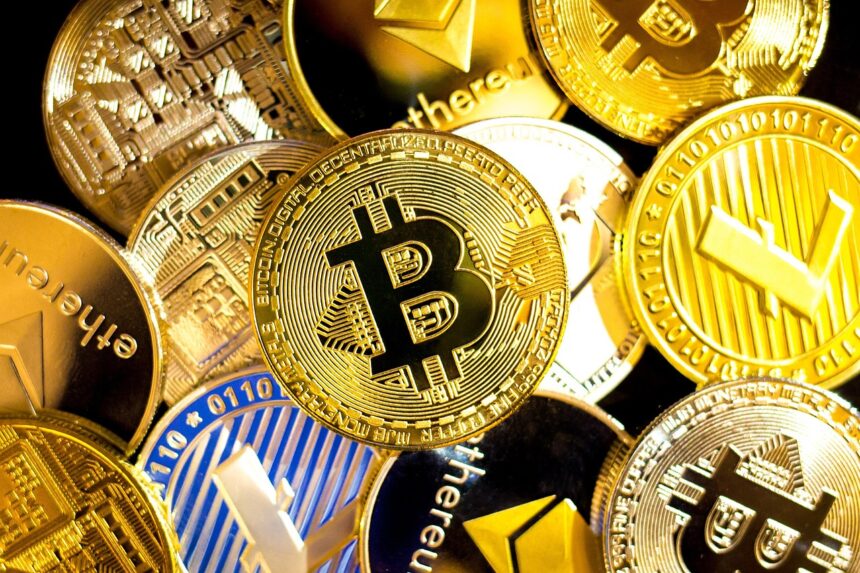If your search for the best crypto to buy now brought you here then you’re in the right place. The crypto market has evolved rapidly over the years with new cryptocurrencies being launched regularly.
While Bitcoin (BTC) maintains its role as the market leader, investors are increasingly turning their attention to altcoins for diversification and higher growth potential.
CoinGecko data shows that there are over 20,000 cryptocurrencies, with the global crypto market valuation sitting above $4 trillion as of September 2025.
With this backdrop, investors continue to struggle with the decision on the best crypto to buy. In this guide, we highlight some altcoins with strong fundamentals, good tokenomics and growing ecosystems, and the risks to keep in mind.
Factors to Consider Before Buying Any Crypto Asset
While thousands of crypto assets exist, only a handful have real staying power. To identify which coins are worth adding to your portfolio, you need to look beyond hype and focus on fundamentals that determine long-term value.
Here are the key factors that make a cryptocurrency worth buying or investing in:
- Strong Utility and Real-World Use Cases
A crypto asset should solve a problem or bring clear value to users. Tokens tied to decentralized finance (DeFi), gaming, payments, cross-border transfers, or artificial intelligence tend to have stronger adoption potential.
The more people can actually use the coin, the more resilient it becomes against market downturns.
- Active Development and Innovation
Crypto projects that thrive are backed by strong developer teams and ongoing innovation. Frequent upgrades, improvements in speed, scalability, and the introduction of new features show that a project is serious about growth.
A crypto project with stagnating development, on the other hand, is a red flag.
- Liquidity and Market Presence
Liquidity is highly essential. A good altcoin should be available on major global exchanges with healthy trading volumes.
High liquidity ensures that you can buy and sell quickly without large price slippage. It also signals trust and recognition from the broader crypto market.
- Community Strength and Adoption
Behind every successful crypto project is a strong community. Ranging from developers, investors, to everyday users, community support drives awareness, partnerships, and adoption.
Cryptocurrencies with vibrant ecosystems in DeFi, non-fungible tokens (NFTs), payments, or enterprise solutions are more likely to survive market cycles.
- Security and Network Reliability
Security should never be overlooked. Thus, established crypto projects often undergo regular audits, maintain decentralized validator networks, and are less prone to hacks or downtime.
A project’s track record of network reliability is a strong indicator of its credibility.
- Partnerships and Ecosystem Growth
Partnerships with major corporations, governments, or blockchain projects are a green flag. They show that the coin is not just a speculative asset but part of a growing ecosystem with real-world traction.
For example, tokens powering enterprise solutions, stablecoin platforms, or cross-chain protocols are more likely to stand the test of time.
- Tokenomics and supply structure
How a cryptocurrency is designed matters. Factors such as total supply, circulating supply, inflation rate, staking incentives, and token burn mechanisms influence long-term price stability.
Cryptocurrencies with well-structured tokenomics tend to create sustainable growth rather than short-lived pumps.
From the foregoing, a strong crypto project combines utility, development, liquidity, adoption, security, partnerships, and sustainable tokenomics.
When these factors align, the cryptocurrency has the foundation to weather volatility and deliver long-term value.
Read also: Best Crypto Portfolio Strategies for Beginners and Experts
Top 16 Cryptocurrencies by Market Cap (Excluding Stablecoins)
When looking for the best crypto to buy, one of the most reliable ways is to focus on the largest cryptocurrencies by market cap.
These assets have proven staying power, broad recognition, and often set the tone for the rest of the market.
Below are 16 of the most prominent cryptocurrencies, excluding stablecoins, with a breakdown of what they are, why they are strong, and where their risks lie.
- Bitcoin (BTC)
Bitcoin is the first and most valuable cryptocurrency, created in 2009 as a decentralized peer-to-peer (P2P) digital currency. It was designed to be borderless, censorship-resistant, and an alternative to traditional fiat money.
BTC’s strength lies in its unmatched recognition and adoption. Institutions, companies, and individuals use it as a hedge against inflation and as a store of value.
Its liquidity and market dominance also make it the safest entry point into crypto. However, Bitcoin’s utility is limited compared to newer blockchains, and it continues to face criticism over its energy usage due to its proof of work (PoW) consensus algorithm.
- Ethereum (ETH)
Ethereum introduced the concept of programmable money through smart contracts, making it the foundation of DeFi, NFTs, and Web3 applications. It remains the second-largest cryptocurrency and the most influential blockchain after Bitcoin.
Ethereum’s strength comes from its massive developer community, extensive ecosystem, and the transition to proof of stake (PoS), which improved energy efficiency. With Layer-2 solutions reducing fees, Ethereum remains the leading platform for DeFi innovation.
The main downside is persistent competition from newer, faster blockchains and occasional network congestion that leads to high gas fees.
- XRP (XRP)
Backed by Ripple, XRP is the native token of XRP Ledger, a blockchain solution designed for fast and low-cost cross-border payments. One of its key advantages is adoption by financial institutions exploring blockchain-based settlements.
Many financial institutions see it as a viable tool for streamlining international transfers. Despite its historic legal dispute with the U.S. Securities and Exchange Commission (SEC), XRP remains popular having been classified as a non-security asset.
However, some in the crypto community argue that XRP is too centralized compared to other crypto projects.
- Binance Coin (BNB)
BNB is the native cryptocurrency of Binance, the world’s largest crypto exchange by trading volume. Initially launched as a utility token for trading fee discounts, it has grown into the backbone of the Binance ecosystem.
BNB is used for transaction fees on the BNB Smart Chain network, token burns that reduce supply, and ecosystem projects ranging from DeFi to NFTs.
- Solana (SOL)
Solana is a high-performance blockchain built for scalability, boasting some of the fastest transaction speeds in the industry.
It has become a go-to network for DeFi, gaming, and NFT applications. What makes it unique is its efficiency, scalability and low fees, which attract developers and users seeking alternatives to Ethereum.
The ecosystem has grown quickly with strong adoption in Web3 gaming and NFT marketplaces. Solana’s main weakness is its history of network outages.
Read also: 7 Best AI Cryptocurrencies You Should Know
- Dogecoin (DOGE)
Dogecoin started as a joke in 2013 but quickly became one of the most recognizable cryptocurrencies thanks to its community and pop culture appeal. It was built as a lighthearted P2P currency.
DOGE’s growth emanated from its branding and loyal following, which has made it widely used for tipping and micro-payments. Celebrity endorsements and grassroots adoption keep it in the spotlight.
However, DOGE has limited technical development and an inflationary supply, making it more speculative than utility-driven.
- Tron (TRX)
Tron is a blockchain platform designed to decentralize the internet, focusing on content sharing, decentralized applications (dApps), and Web3 infrastructure.
Tron’s wide adoption comes from its scalability and low-cost transactions, making it popular for crypto transfers.
The drawbacks are governance concerns, as critics argue it is more centralized than it claims, and stiff competition from other smart contract platforms.
- Cardano (ADA)
Cardano is a research-driven blockchain project that emphasizes security, scalability, and sustainability. Its development is guided by academic research and peer-reviewed innovation.
The advantage of the project is its strong architecture and reputation for stability, making it attractive for governments and institutions exploring blockchain use.
Cardano is also positioning itself in areas like identity and financial access. Its downside, however, is the slow pace of development, which sometimes causes it to lag behind faster-moving competitors.
- Chainlink (LINK)
Chainlink is a decentralized oracle network that connects smart contracts with real-world data, making it a critical piece of blockchain infrastructure.
Its strength comes from being the most widely adopted oracle provider, powering a huge number of DeFi and Web3 applications.
As more industries turn to tokenization and blockchain integration, Chainlink’s role is expected to expand.
- Avalanche (AVAX)
Avalanche is a smart contract platform known for its speed and customizable architecture through subnets, which allow developers to create independent blockchains.
Its strength lies in its flexibility and performance, making it appealing for DeFi projects and the tokenisation of real-world assets. The ability to scale through subnets positions Avalanche as a strong competitor to Ethereum.
However, adoption is still building, and its complexity poses challenges for widespread developer integration.
Read also: How to Get Started in the Crypto Industry: A Comprehensive Guide
Conclusion
There’s no single best crypto to buy now that fits every investor. BTC and ETH remain foundational. The rest of the 16 picks represent plausible ways to capture growth across key sectors of the crypto market.
Ultimately, you should focus on utility, liquidity, roadmap development, and risk management.






